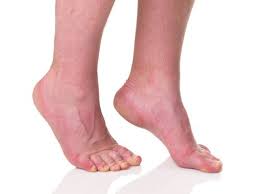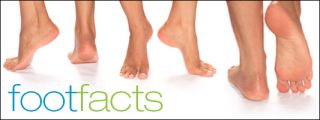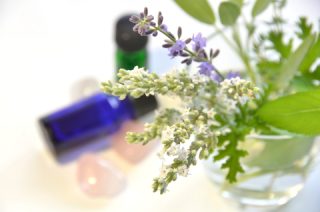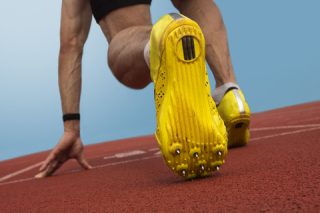Written by Michelle Champlin BSc Pod., M.Ch.S., S.R., Ch., (UK)
What is a verruca?
A verruca is a skin infection commonly on the feet or hands and is caused by a virus. Also sometimes called a plantar wart, they are caused by the human papilloma virus. The virus causes your skin to produce excess keratin, a hard protein that helps build your skin, nails and hair.
Michelle Champlin, Chief Podiatrist at Dubai Podiatry Centre explains, “Depending where the verruca is on your foot, it will either stick out, causing a bump or remain pushed into your skin. If it’s on an area that you stand on – your heel or ball of your foot for example – it’s likely to be pressed into your skin. It’s more likely to stick out on the arch of your foot for example, or your fingers or toes, as they aren’t being pressed in when you stand.”
How do you catch a verruca?
The virus enters your body through even invisible scratches, cracks or abrasions in your skin. It survives best in moist areas, such as poolside, shower trays and damp towels. You can also catch it through direct skin-to-skin contact. It is not uncommon for us to see a person with a verruca on their foot then report that it has spread to their fingers, from picking at or touching the verruca.
Warts are much more likely to affect children and young people.
Are verrucas painful?
Whether a verruca is painful or not mainly depends on where it is on your body. Mrs. Champlin advises “If it’s on an area that takes weight – such as your heel – it’s more likely to cause discomfort when you’re standing or walking, just like a corn in the same area would or even a little stone in your shoe.” On areas such as your finger, it can be painful or bleed if you catch it on an object.
Will a verruca go away on its own?
Some verrucas do go away on their own, in time. It will depend on the person’s immune system. However, it is not uncommon for patients to report that they have had a verruca for ten years or more.
Verruca
What does a verruca look like?
Sometimes people will confuse a wart from a ‘corn’ but they are two very different things, with different causes and treatments. It’s important to get the right diagnosis and treatment – a Podiatrist is very used to dealing with both corns and verrucas every day and can easily distinguish between the two and explain how, as well as what to do to treat it.
A verruca is caused by a virus, whereas a corn is build up of hard skin due to excess pressure on an area of skin – from friction in shoes on top of your toes, or maybe in the middle of your forefoot from pinched skin, due to a collapsed transverse arch. So corns can be traced back to constant friction from an outside force, such as tight shoes, or a biomechanical problem in your feet such as collapsed arches or retracted toes. Therefore – you can catch a verruca; you can’t ‘catch’ a corn. (Your Podiatrist can safely and painlessly remove a corn, identify what caused it, and how to help stop it from coming back, from footwear choices to protective toe sleeves or custom orthotics).
A verruca (plantar wart) on your foot can:
- Look either raised or flat and be pale/white
- Have one or more tiny black ‘dots’ in the centre (these are blood vessels)
- Be painful when you stand on them or squeeze them.
Another type of wart (verruca vulgaris) is more common on your knees, fingers etc. and can be:
- Hard and raised
- Rough and misshaped, almost like a ‘cauliflower’
- Less than a few millimeters to the size of a dirham coin
- One or many grouped together
Other types of warts include ‘plane warts’ that tend to occur on the legs and be more yellowish, smooth and flat. Another type of wart we see in the clinic are ‘periungal’ warts that occur under or around the nails of the fingers or toes. They are quite rough, and can affect the shape of the nail, causing discomfort. Mosaic warts tend to grow on the palms of the hands or soles of the feet. They grow in groups, or clusters, and have a ‘tile’ like pattern.
Verruca Treatments
Verrucas sometimes go away on their own. However, if it spreading, becoming painful or causing you embarrassment, you can have it treated.
It’s important to note that because a verruca is caused by a virus, no virus of any sort can be killed by any medicine. What any verruca treatment tends to do is harm the verruca site, to trigger your body’s immune system into recognizing the virus and attacking it. Podiatrists can also safely reduce the hard skin over the site to make it less painful to walk on, but this doesn’t remove the virus and the hard skin will build up again if left untreated.
Older treatment options included:
- Cryotherapy
- Salicylic acid
- Homeopathic treatments (thuja)
Dubai Podiatry Centre is renowned for research and innovation in the field of foot, toe and nail health. The clinic has moved on from treatments such as salicylic acid or cryotherapy, due to their relative ineffectiveness.
Cryotherapy can be quite painful for the patient, as the skin is basically being ‘burned.’ It tends to require quite a few follow up visits over many months – sometimes 10 or 12 sessions.
Salicylic acid, whiter painted on or in a plaster, can also burn healthy skin and tissue outside of the verruca site, causing healthy skin to become ‘macerated’ – soft, tender and mushy. No further or alternative treatment can take place if a site is macerated, infected or damaged and this must be left to heal before reviewing for any other treatment strategy.
Cryotherapy is not recommended for children, as it can be too painful and distressing. If after 12 weeks of cryotherapy the verruca has not gone away, it is unlikely to be successful and therefore should be discontinued. Treating verrucas under or near nails requires extra care and expertise, so that the nail growth is not damaged – cryotherapy should be avoided in these areas.
Dubai Podiatry Centre specializes in difficult to treat foot and nail problems, especially verrucas that have not responded to other treatments such as salicylic acid or cryotherapy.
Latest Treatment
Sometimes, your Podiatrist may recommend a short course of specific, targeted Vitamin therapy prior to and during verruca treatment, which can aid the body’s healing process and address any vitamin deficiency that can contribute to the body’s reduced immune response.
Dubai Podiatry Centre recommends the latest in verruca therapy – Dermojet. This is a needle-less device that looks like a steel pen, which discharges a range of medicines depending on what it is being used to treat. It is sometimes, for example, used by Doctors to administer vaccines virtually pain free and quickly.
Dermojet can also be used to specifically target specialized areas such as small verrucas on the feet and has been adapted for use by Dermatologists in treating a range of skin conditions. It only takes a few seconds, is sterile and has proven highly effective in the fight against verrucas, with generally only one follow up visit required to either deliver a ‘top up’ treatment or to check that the verruca is gone and discharge the patient.
Caution
It is very important that verrucas should never be surgically removed or ‘cut out’. Not only is this in an ineffective way to tackle a virus, this can lead to long term issues that are far more problematic than the original verruca – particularly scar tissue on weight bearing area of your feet, which can cause ongoing pain and require long term scar reduction therapy.
Also, if you are pregnant, trying to get pregnant or breast-feeding, leave the verruca alone. If it’s painful, see a qualified, licensed Podiatrist, such as at Dubai Podiatry Centre, to safely reduce the hard skin of the verruca to reduce pain when walking or standing on it. You can also seek advice from your midwife or obstetrician.
Avoid catching / spreading verrucas
- Do not touch or pick at your (or anyone’s) wart – this is a great way to spread it! Wash your hands thoroughly straight away if you forget.
- Do not share towels, shoes or socks.
- Wear flip-flops around the pool and in shared shower / changing areas.
- Avoid pedicures or manicures in salons if you have a wart or verruca on your hands or feet to avoid spreading it to the pedicurist’s hands or to other customers through contaminated instruments.
- Only attend accredited salons that have been inspected for hygiene standards and which properly sterilize and autoclave instruments between customers.
- Avoid sharing razors or waxing/sugaring materials as these can harbor the virus and introduce it into tiny cuts or breaks in your skin when removing hair.
- Follow a good daily foot care regime – dry skin is more prone to crack and allow in infections such as viruses. File feet to keep hard skin at bay, moisturize with a urea-based foot cream and try silicone gel based moisturizing socks around the house for baby soft feet.
If you think you, your child or partner has a verruca, contact the UK qualified Podiatrists at Dubai Podiatry Centre on +971 4 3435390 or book an appointment online (click here).








